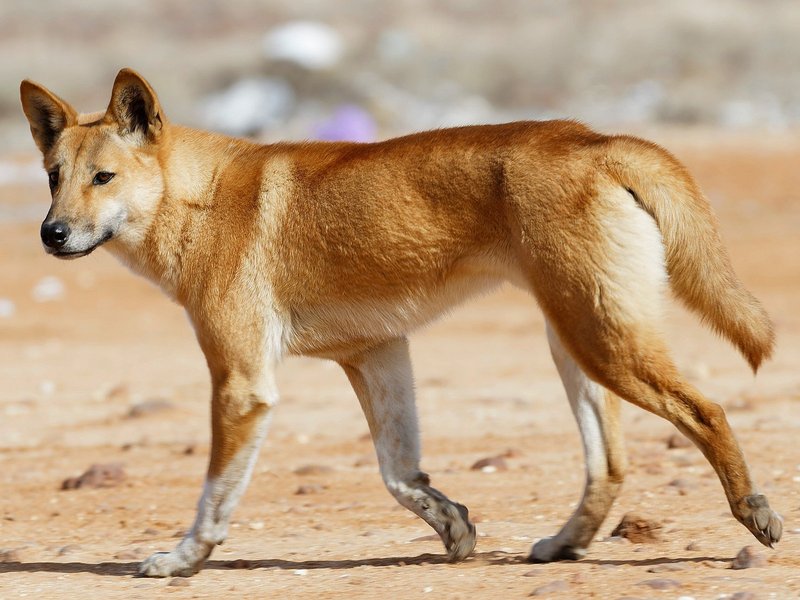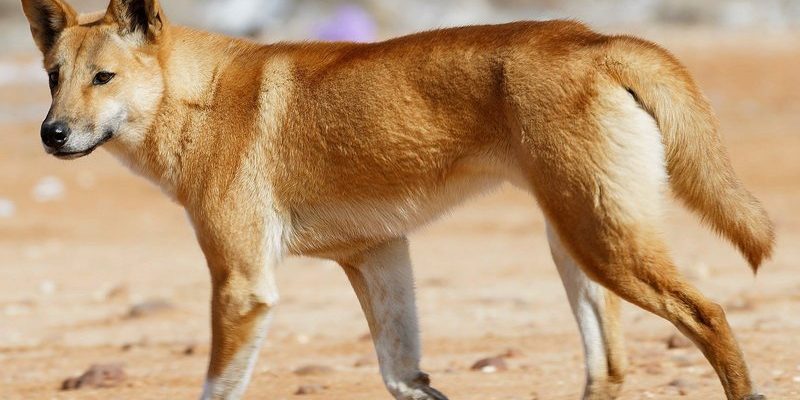
The dingo is more than just a wild dog; it’s a fascinating creature that roams the Australian outback and beyond. Picture this: a clever, agile dog with a golden-brown coat, a unique howl, and an instinct that drives it to explore the wild. Unlike your typical pet dog, dingoes play a significant role in their ecosystems, showcasing what it means to be a part of nature. Their story is a blend of survival, adaptation, and mystery, making them a captivating subject for nature lovers and animal enthusiasts alike.
If you’ve ever found yourself curious about these animals, you’re not alone. Dingoes are often misunderstood and sometimes even feared, but understanding them can shed light on their important role in the environment. So, let’s dive deeper into the world of dingoes, exploring their behavior, habitat, diet, and much more.
What is a Dingo?
A dingo is a subspecies of the grey wolf, closely related to dogs and known scientifically as Canis lupus dingo. These wild canines are believed to have migrated to Australia from Southeast Asia around 4,000 years ago. They stand out with their slender bodies, erect ears, and bushy tails, which all contribute to their unique appearance. Dingoes are typically about the size of a medium dog, with males weighing between 35 to 50 pounds and females slightly smaller.
One of the most intriguing aspects of dingoes is their behavior. They are social animals that often live in packs, working together to hunt and care for their young. These packs usually consist of a breeding pair and their offspring, showcasing a family-oriented structure. Their vocalizations are particularly notable, as they communicate through a series of howls, barks, and growls. This communication plays a crucial role in maintaining social bonds and coordinating hunts.
Habitat of the Dingo
Dingoes are incredibly adaptable creatures. They can be found in a variety of habitats across Australia, ranging from deserts and woodlands to grasslands and even coastal regions. The flexibility in their habitat choice is a testament to their survival skills. In areas where human development is limited, dingoes thrive and establish territories that can cover large distances.
You might be surprised to learn that dingoes also inhabit places like Fraser Island, a UNESCO World Heritage site. Here, they roam free, and you’ll often see them running along the beach or through the lush forests. However, it’s not all idyllic; these wild dogs face threats from habitat loss, urbanization, and breeding with domestic dogs, which can dilute their genetic purity.
Dingo Diet
Dingoes are opportunistic hunters, meaning their diet can vary widely based on what’s available. They primarily feast on kangaroos, wallabies, rabbits, and even livestock when they venture closer to farms. This diverse diet allows them to thrive in various environments, whether they’re in arid deserts or dense forests.
Interestingly, dingoes have also adapted to hunting in packs, which increases their success rate when capturing larger prey. They use strategies that involve stalking and ambushing, showcasing their intelligence and teamwork. Depending on the season and food availability, dingoes may also scavenge for leftover carrion, adding versatility to their diet.
| Characteristic | Details |
|---|---|
| Size | Males: 35-50 lbs; Females: 30-45 lbs |
| Habitat | Deserts, woodlands, grasslands, coastal regions |
| Diet | Kangaroos, wallabies, rabbits, livestock |
| Life Span | 10-15 years in the wild |
| Social Structure | Live in packs; family-oriented |
Reproduction and Lifespan
Dingoes typically breed once a year, usually between March and June. During this time, the dominant male and female in the pack mate, and the female will give birth to a litter of typically four to six pups after a gestation period of about 63 days. Raising the pups is a community effort, with all pack members helping to care for the young ones. This nurturing behavior not only ensures the survival of the pups but also strengthens social bonds within the pack.
Pups are usually weaned by about 8 weeks, but they stay with their parents for up to a year, learning essential survival skills. The parents teach them how to hunt, what to eat, and how to communicate effectively with each other. If conditions are favorable, dingoes can live up to 10 to 15 years in the wild, although they face numerous threats, such as disease, food scarcity, and human encroachment.
Conservation Status
The conservation status of the dingo varies across Australia. While they are classed as “least concern” by the International Union for Conservation of Nature (IUCN), they face significant threats, including habitat loss, interbreeding with domestic dogs, and human persecution. In some areas, dingoes are viewed as pests, leading to culling practices that further endanger their populations.
Conservationists emphasize the importance of protecting their habitats and controlling domestic dog populations to maintain the genetic integrity of dingoes. Public education is also vital in changing perceptions about these wild animals. Instead of seeing dingoes as threats, we can appreciate their place in the ecosystem as top predators, helping to regulate populations of other species.
Interesting Facts About Dingoes
If you think dingoes can’t get any more fascinating, think again! Here are some intriguing tidbits about these wild dogs:
- Dingoes are known for their distinctive howl, which can carry for several kilometers.
- They have a unique hunting technique that can involve chasing prey into the water or over rough terrain.
- Unlike domestic dogs, dingoes do not bark as often, preferring howls and growls.
- Some dingoes have been observed using tools, like dropping rocks to crack open shellfish!
The dingo is an emblem of Australia’s untamed wilderness. These wild dogs, with their remarkable adaptability and social behavior, play a vital role in their ecosystems. Understanding dingoes helps us appreciate not just the animal itself, but also the delicate balance of nature in which they thrive. Whether you’re a wildlife enthusiast or just someone who loves to learn, dingoes are a reminder of the wild spirit that exists in our world.
FAQ
Are dingoes dangerous to humans?
Generally speaking, dingoes pose little threat to humans. While there are occasional incidents, most dingoes avoid human contact. However, it’s essential to respect their space and understand that they are wild animals. Feeding or approaching dingoes can lead to dangerous situations, as they may become more aggressive if they associate humans with food.
Can dingoes be kept as pets?
Keeping a dingo as a pet is not recommended. Dingoes have unique social and environmental needs that are challenging to meet in a domestic setting. They require extensive physical activity and mental stimulation, which can be difficult to provide in typical household conditions. Moreover, in some places, owning a dingo is illegal.
What do dingoes symbolize in Australian culture?
Dingoes hold a significant place in Aboriginal culture, often symbolizing strength, survival, and connection to the land. They are featured in many Aboriginal stories and artworks, emphasizing their importance to the identity and traditions of Indigenous Australians.
How can we help conserve dingoes?
Supporting conservation efforts, educating others about dingoes, and advocating for their protection can significantly impact their populations. You can also help by minimizing human-dingo interactions and promoting responsible pet ownership to reduce the risk of hybridization.
Do dingoes howl like domestic dogs?
Yes, dingoes do howl, but their vocalizations are deeper and more resonant compared to domestic dogs. They use howling to communicate with their pack members over long distances, especially during hunting or when trying to gather the group. Their howls can be hauntingly beautiful, echoing through the Australian wilderness.
What is the difference between dingoes and domestic dogs?
Dingoes are more closely related to wolves than to most breeds of domestic dogs. They have distinct physical and behavioral traits, such as their slim build, straight ears, and a more wolf-like appearance. Behaviorally, dingoes are generally more independent and less reliant on humans than domestic dogs.
Are dingoes an endangered species?
While dingoes as a species are not classified as endangered, certain populations face significant threats due to habitat loss and interbreeding with domestic dogs. Conservation efforts are crucial to maintaining healthy dingoes populations and preserving their natural behaviors.
What is a pack structure like among dingoes?
Dingo packs typically have a hierarchical structure centered around a breeding pair. These leaders mate and have pups, which other pack members help raise. This social structure promotes cooperation in hunting and provides protection for the young. Pack bonding is strong, and their interactions can be quite complex.
Can dingoes swim?
Yes, dingoes are excellent swimmers! They can often be seen swimming in coastal waters, which helps them hunt for food such as fish and shellfish. Their physical build and strong legs make them agile swimmers, adapting well to various environments.
What challenges do dingoes face today?
Dingoes face several challenges, including habitat destruction, human-wildlife conflict, and competition with domestic dogs. Climate change is also impacting their environments, making conservation efforts increasingly vital. Protecting their habitats and reducing conflict with humans is essential for their survival.

